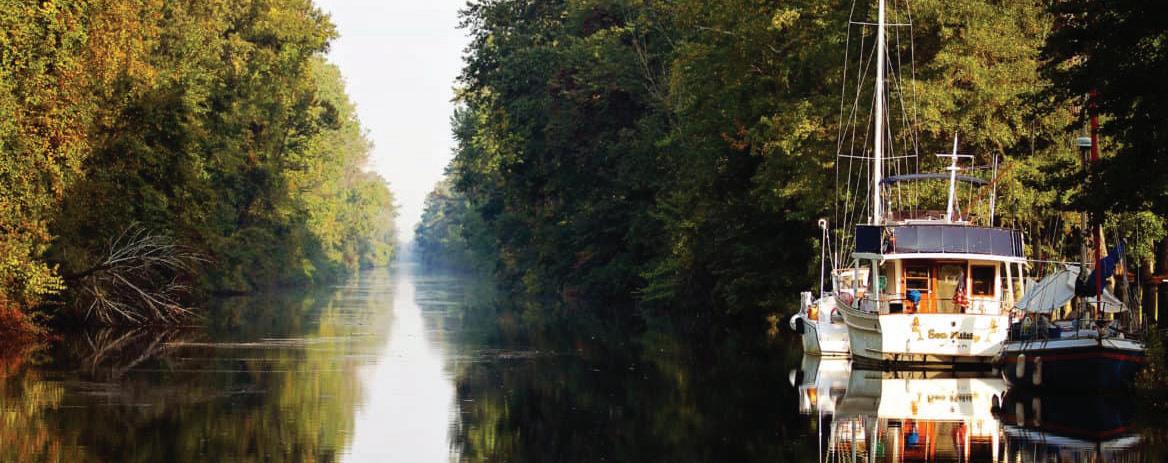
3 minute read
President’s Report
by Dr. Benjamin F. Speller Jr. FOMOA President
Agrant received during the 2017–2018 fiscal year continues to support North Carolina Women and the Underground Railroad, the theme for MOA’s 50th Anniversary Symposium. The symposium was carried out under the leadership of Nancy Bailey Muller, vice president of Friends of the Museum of the Albemarle, and historian Wanda Hunt McLean. An extension of that grant, from the State of North Carolina through the North Carolina Department of Natural and Cultural Resources, during the 2018–2019 fiscal year allowed FOMOA to also support development of a 26-minute video, Northeastern North Carolina’s Underground Railroad.

Dismal Swamp Canal
Courtesy of Visit Camden County
Northeastern North Carolina’s Underground Railroad highlights the state’s unique role in the Underground Railroad, with a special look at the Great Dismal Swamp, Edenton in Chowan County, and Halifax County, and the many waterways that comprise the Maritime Underground Railroad. The film was produced by Angie Staheli, with guidance from local historians Muller and McLean, William J. McCrea, and Barbara Putnam, as well as several individuals who provided conceptual, geographical, and historical context for the video: Carl Burke, site manager at Historic Halifax State Historic Site, Angela Thorpe, director of the North Carolina African American Heritage Commission, Dr. Adrienne Israel, professor emerita of history for Guilford College, Max L. Carter, director of the Friends Center at Guilford College, and Dr. Benjamin Speller, president of FOMOA. In addition, McLean also provided historical context for the Dismal Swamp as a pathway to freedom; Dr. David Cecelski described the role of waterways in eastern North Carolina as pathways to freedom and how Harriet Jacobs used them to escape enslavement; and Carol Shields, described what role the Roanoke River and its tributaries played as pathways.
The video ends with Speller observing that the publications of two northeastern North Carolina women - Harriet Jacobs of Edenton (Incidents in the Life of a Slave Girl) and Hannah Bond, or Hannah Crafts, of Bertie and Hertford Counties (The Bondwoman’s Narrative) - demonstrate that literate enslaved persons could communicate their own experiences of enslavement very effectively.
We sincerely appreciate the vision and efforts of the following individuals that made this video production possible: Wanda Hunt McLean, an awardwinning public historian, who brought national recognition to northeastern North Carolina’s role in the Underground Railroad; historian Dr. David Cecelski, who has written several award-winning books and hundreds of articles about history, culture, and politics on the North Carolina coast; Carl Burke, who not only shared knowledge of Historic Halifax State Historic Site but also the Underground Railroad and the African American experience; Carol Shields, executive director, Roanoke River Underground Railroad Trail, a development initiative of Roanoke River Partners Inc.; and Angela Thorpe, director of the North Carolina African American Heritage Commission, who has provided statewide coordination with the National Underground Railroad Network to Freedom Project of the National Park Service.









